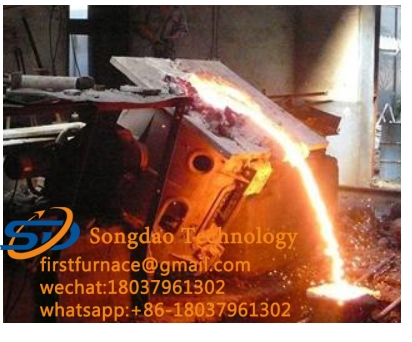- 01
- Mar
Five common troubleshooting methods for induction melting furnaces
Five common troubleshooting methods for induction melting furnaces
(1) The power supply of the induction melting furnace: Use a multimeter to check whether there is electricity behind the main circuit switch (contactor) and the control fuse, which will rule out the possibility of disconnection of these components.

(2) Rectifier of induction melting furnace: The rectifier uses a three-phase fully controlled bridge rectifier circuit, which includes six fast fuses, six thyristors, six pulse transformers and a freewheeling diode.
There is a red indicator on the quick-acting fuse. Normally, the indicator is retracted inside the shell. When the quick-acting blows, it will pop up. Some quick-acting indicators are tight. When the quick-acting blows, it will get stuck inside. , So for the sake of reliability, you can use a multimeter to test the fast-blow on/off gear to determine whether it is blown.
The simple way to measure the thyristor is to use a multimeter to measure its cathode-anode and gate-cathode resistance with a multimeter (200Ω block). The thyristor does not need to be removed during the measurement. Under normal circumstances, the anode-cathode resistance should be infinite, and the gate-cathode resistance should be between 10-50Ω. Too large or too small indicates that the gate of this thyristor fails, and it cannot be triggered to conduct.
The secondary side of the pulse transformer is connected to the thyristor, and the primary side is connected to the main control board. Use a multimeter to measure the primary resistance of about 50Ω. The freewheeling diode is generally not prone to failure. Use a multimeter diode to measure its two ends during inspection. The multimeter shows that the junction voltage drop is about 500mV in the forward direction, and the reverse direction is blocked.
(3) Inverter of induction melting furnace: The inverter includes four fast thyristors and four pulse transformers, which can be inspected according to the above methods.
(4) Transformers of induction melting furnace: Each winding of each transformer should be connected. Generally, the resistance of the primary side is about tens of ohms, and the secondary resistance is a few ohms. It should be noted that the primary side of the intermediate frequency voltage transformer is connected in parallel with the load, so its resistance value is zero.
(5) Capacitors of induction melting furnaces: The electric heating capacitors connected in parallel with the load may be broken down. The capacitors are generally installed in groups on the capacitor rack. The group of the broken capacitors should be determined first during the inspection. Disconnect the connection point between the bus bar of each group of capacitors and the main bus bar, and measure the resistance between the two bus bars of each group of capacitors. Normally, it should be infinite. After confirming the bad group, disconnect the soft copper skin of each electric heating capacitor leading to the bus bar, and check one by one to find the broken capacitor. Each electric heating capacitor is composed of four cores. The shell is one pole, and the other pole is led to the end cap through four insulators. Generally, only one core will be broken down. The capacitor can continue to be used, and its capacity is 3/4 of the original. Another fault of the capacitor is oil leakage, which generally does not affect the use, but pay attention to fire prevention.
